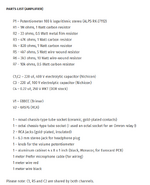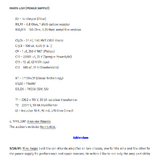BillyTheBob
Newbie level 4
Hi. I'm new, so, sorry for the mistakes I make (whether in the forum or when talking because I'm not that good at English).
I'm trying to replicate this circuit (from this link: https://headwizememorial.wordpress....e-ended-otl-amplifier-for-dynamic-headphones/) in Proteus to try to understand/see how things work etc.

---------------------------------------
But for the second part of the power supply, there is no output voltage shown:

I tried to match every component as much as I could.
What can I do to have voltage output on C5(1) or is it supposed to look like that, what am I missing/did I miss?
I don't have a strong understanding of every component yet. Sorry if it wasn't relevant or was a very broad question.
tr1(p1) and tr2(p2) are 220 volt 60hz
I'm trying to replicate this circuit (from this link: https://headwizememorial.wordpress....e-ended-otl-amplifier-for-dynamic-headphones/) in Proteus to try to understand/see how things work etc.
---------------------------------------
But for the second part of the power supply, there is no output voltage shown:
I tried to match every component as much as I could.
What can I do to have voltage output on C5(1) or is it supposed to look like that, what am I missing/did I miss?
I don't have a strong understanding of every component yet. Sorry if it wasn't relevant or was a very broad question.
tr1(p1) and tr2(p2) are 220 volt 60hz

